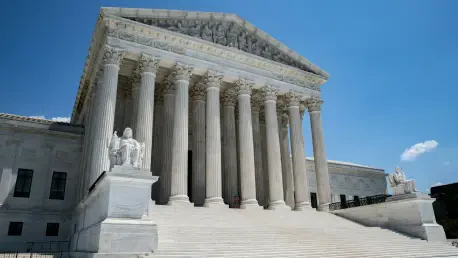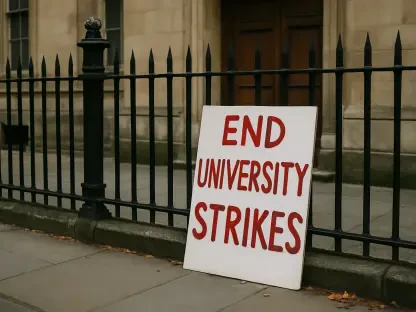What happens when federal mandates threaten to silence conversations about diversity in classrooms across America, leaving teachers hesitant to discuss systemic racism for fear of losing federal funding for their schools? This scenario became a stark reality when the U.S. Department of Education issued guidance aimed at curbing diversity, equity, and inclusion (DEI) initiatives in education. Yet, in a landmark decision, a federal court struck down this policy, igniting a fierce debate about equity, free speech, and the role of government in shaping learning environments. This ruling marks a critical juncture, not just for educators but for the very fabric of how schools address historical inequities.
Why This Decision Resonates Across Education
At the heart of this legal battle lies a fundamental question: should federal policy dictate how schools approach diversity? The court’s decision to invalidate the Education Department’s anti-DEI guidance is more than a procedural win; it’s a signal that the push against inclusive education has hit a significant roadblock. This ruling challenges the notion that DEI practices inherently discriminate, a stance that had threatened to dismantle programs supporting underrepresented students. Its importance cannot be overstated, as it directly impacts millions of students and educators navigating an already polarized landscape, setting a precedent for how far federal overreach can extend into academic spaces.
The implications stretch beyond legal texts into the daily lives of those in education. Schools and colleges, previously under pressure to abandon cultural programs or risk funding cuts, now have a reprieve to maintain their commitment to equity. This moment underscores a broader national tension between fostering inclusion and adhering to policies that some argue prioritize neutrality over justice. As this debate unfolds, the ruling stands as a reminder of the judiciary’s role in balancing power, ensuring that policies affecting education are not only lawful but also just.
The Roots of the Conflict: DEI in the Crosshairs
The controversy surrounding DEI in education didn’t emerge overnight. For years, these initiatives have been both celebrated as tools for addressing systemic disparities and criticized as divisive by conservative factions. On February 14, under a prior administration, the Department of Education released guidance labeling many DEI practices—such as scholarships for minority students or classroom discussions on race—as discriminatory, threatening to withhold federal funds from non-compliant institutions. This policy was part of a larger effort to combat what some officials called indoctrination, asserting that such programs perpetuated stereotypes rather than unity.
Opposition to this stance was swift and vocal. Educators, advocacy groups, and progressive policymakers argued that the guidance undermined efforts to create equitable learning environments. They pointed to data showing persistent achievement gaps, with the National Center for Education Statistics reporting in 2025 that Black and Hispanic students still lag behind their white peers by significant margins in reading and math proficiency. The clash between these perspectives framed DEI as a lightning rod, with federal policy attempting to reshape education in ways that many saw as regressive, setting the stage for a legal showdown.
Inside the Courtroom: Dissecting the Legal Blow
When U.S. District Judge Stephanie Gallagher delivered the ruling, the decision dismantled the anti-DEI guidance on solid legal grounds. The court found that the Education Department violated the Administrative Procedure Act by issuing what amounted to a legislative rule without the required public notice-and-comment period. This procedural misstep was not a minor oversight; it rendered the guidance invalid, as it sought to impose new obligations on schools without proper vetting or transparency, a critical safeguard in federal rulemaking.
Beyond procedure, constitutional issues loomed large. The guidance’s ambiguous language around prohibited practices—such as vaguely defining what classroom content could be deemed discriminatory—created a chilling effect on free speech. Educators were left uncertain about potential penalties, a violation of due process as highlighted by the court. Additionally, the ruling struck down a related directive requiring schools to certify they weren’t using DEI practices, offering immediate relief to institutions under scrutiny. This wasn’t just a slap on the wrist; it was a pointed critique of how federal agencies can overstep their authority in education.
The real-world impact of these legal flaws became evident through cases like investigations into programs supporting underrepresented students. For instance, initiatives like The PhD Project, which aids minority doctoral candidates, had faced federal probes under the guidance. The court’s decision halts such actions for now, emphasizing that policies must respect both legal standards and the rights of those they affect, a principle that could influence future federal actions in education.
Voices on the Frontlines: Reactions to the Verdict
The courtroom decision reverberated through the education community, drawing sharp and varied responses. Kenya Campbell, president of the American Federation of Teachers-Maryland, hailed the ruling as a victory for academic freedom, stating, “Teachers must be free to teach accurate history and meet the diverse needs of students without fear of retribution.” Her words reflect a sentiment shared by many educators who felt the guidance stifled essential conversations about race and equity in schools, a concern backed by a 2025 survey from the National Education Association showing 68% of teachers feared curriculum restrictions under such policies.
On the opposing side, the Department of Education expressed frustration, maintaining that their guidance was meant to protect all students from bias under Title VI of the Civil Rights Act. A spokesperson reiterated their commitment to anti-discrimination enforcement, suggesting that DEI initiatives could sometimes exclude or marginalize certain groups. This perspective highlights a persistent conservative concern that equity programs risk becoming discriminatory themselves, a viewpoint that continues to fuel legislative efforts against DEI across multiple states.
Legal experts offered a more measured take, noting the ruling’s focus on process over substance. Professor Linda Harper, a constitutional law scholar at Georgetown University, remarked, “Judge Gallagher sidestepped the ideological debate on DEI, zeroing in on procedural and free speech violations. This approach mirrors a judicial trend of prioritizing legal integrity over policy merits.” Her analysis points to a temporary shield for educators, though the underlying battle over DEI’s value remains unresolved, leaving stakeholders on edge about what comes next.
Navigating the Aftermath: What Schools and Policymakers Face Now
With the anti-DEI guidance off the table, educational institutions find themselves at a crossroads. The ruling provides a window to sustain diversity initiatives—think cultural centers or lessons on historical inequities—without the immediate threat of federal penalties. Administrators are encouraged to strengthen inclusive curricula, ensuring materials reflect varied perspectives while documenting compliance with existing laws like Title VI. This proactive step can help schools maintain equity goals even as federal scrutiny might persist in other forms.
For policymakers, the court’s emphasis on procedural fairness sends a clear message: future education policies must involve transparent public input to survive legal challenges. The Department of Education’s stated intent to continue enforcing anti-discrimination laws suggests that new guidance or rules could emerge, potentially reigniting conflict. Policymakers would be wise to engage diverse stakeholders early in the process, balancing the pursuit of equity with the need for clear, defensible regulations that don’t overreach into academic autonomy.
Meanwhile, educators face practical challenges in this uncertain climate. Beyond curriculum, they must navigate parental and community concerns about DEI, often with limited resources. A 2025 report from the Education Trust noted that schools with robust DEI programs saw a 12% increase in student engagement among minority groups, evidence of their impact. Building on such data, educators can advocate for sustained support, ensuring that the court’s ruling translates into meaningful protections for inclusive teaching practices over the long term.
Reflecting on a Defining Moment
Looking back, the federal court’s decision to strike down the Education Department’s anti-DEI guidance stood as a pivotal chapter in the struggle for equity in education. It exposed the fragility of federal overreach when not grounded in proper legal process, offering schools a hard-won reprieve to uphold diversity initiatives. The voices of educators, the weight of constitutional principles, and the stark data on educational disparities all converged in this ruling, painting a complex picture of a nation grappling with its past and present.
As the dust settled, the path forward demanded collaboration. Schools were tasked with fortifying their commitment to inclusion through clear policies and community dialogue, while policymakers needed to craft future guidelines with transparency and fairness at their core. For every teacher and student, the challenge remained to keep equity at the forefront, turning this legal victory into a catalyst for lasting change in classrooms nationwide. The journey toward true inclusion, though fraught with obstacles, gained a crucial foothold through this historic decision.









